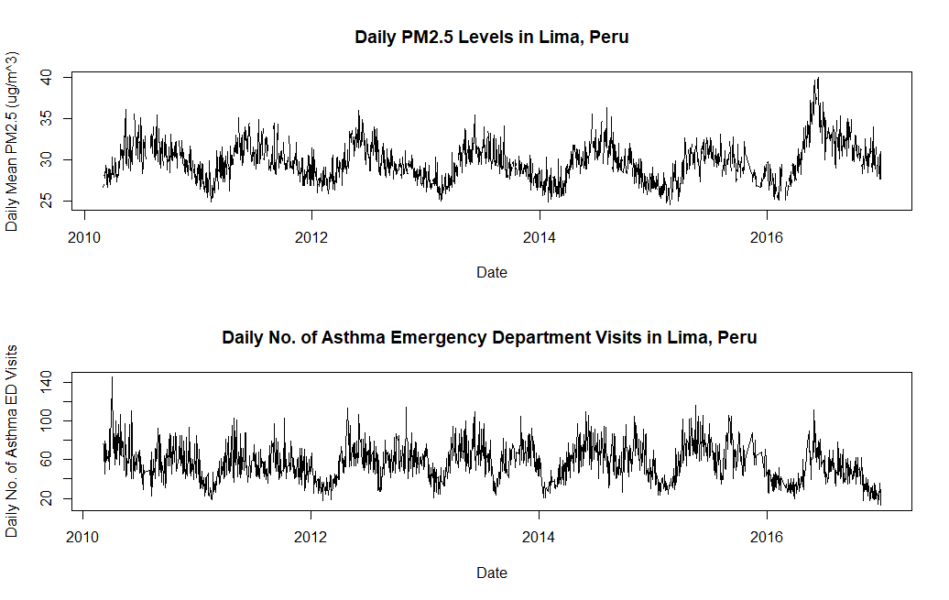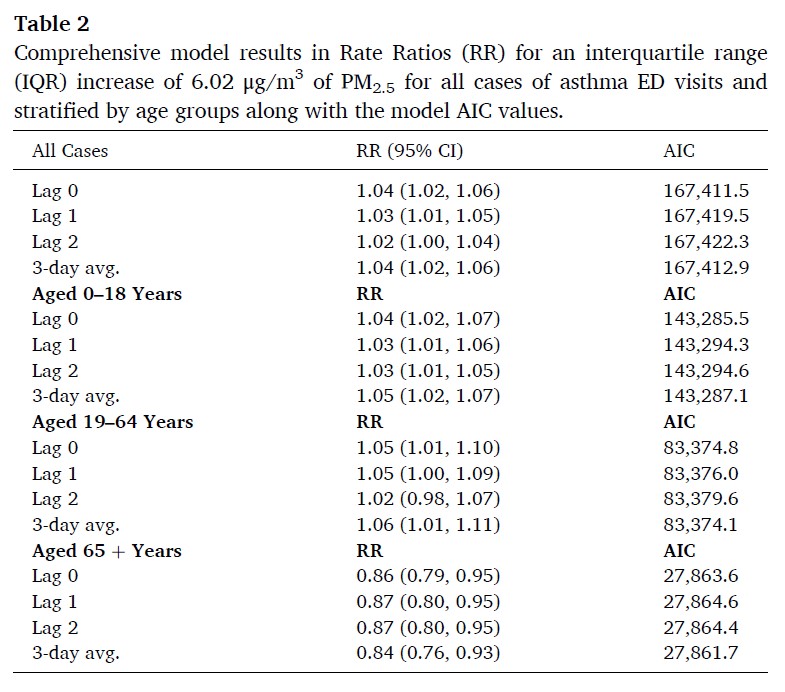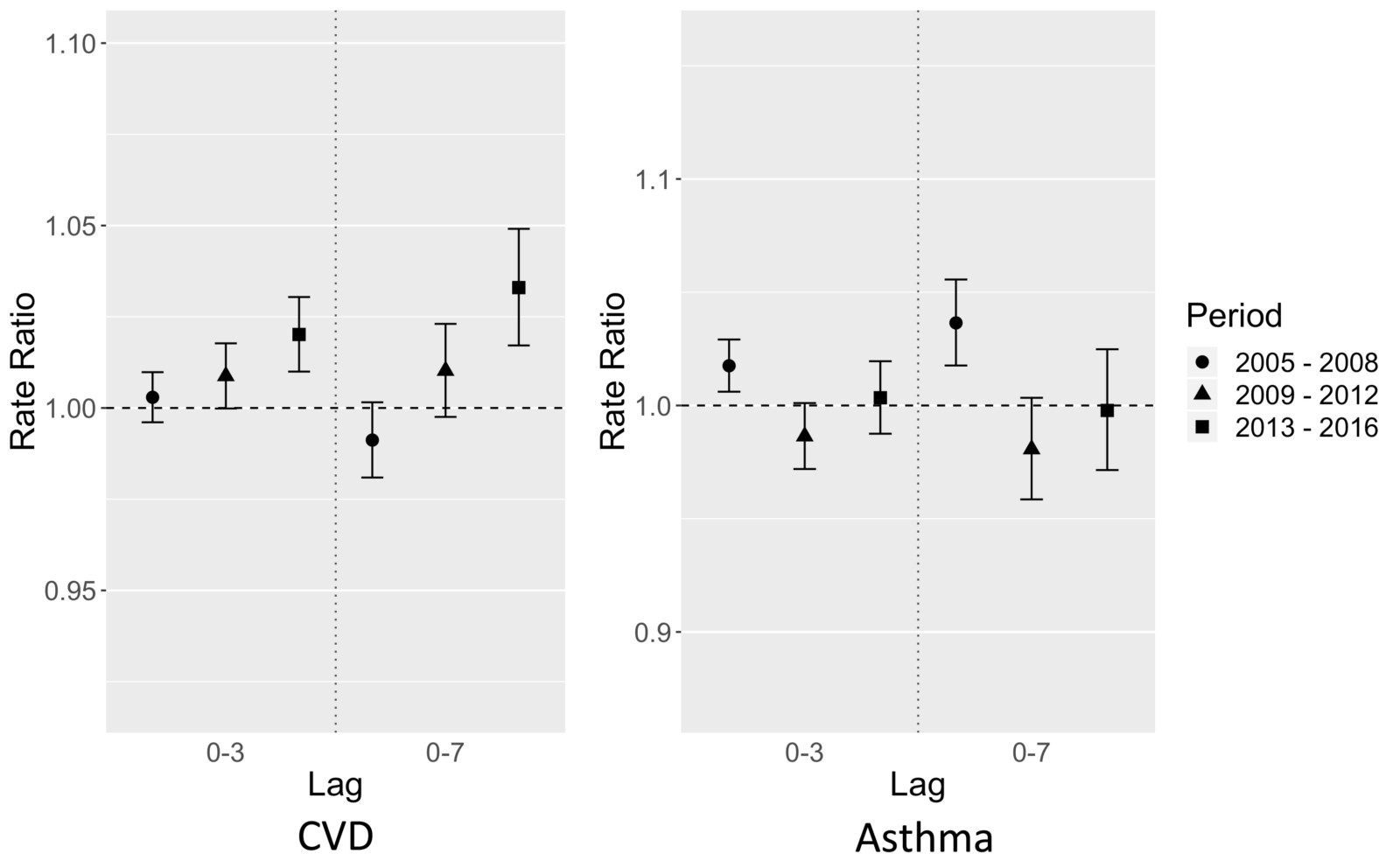Vu, B. N., Tapia, V., Ebelt, S., Gonzales, G. F., Liu, Y., Steenland, K. (2021). The association between asthma emergency department visits and satellite-derived PM2.5 in Lima, Peru. Environmental Research, 199, 111226.
Elsevier: Link
Lima, Peru is one of the most populated and polluted cities in South America. However, epidemiological studies pertaining to air pollution in Lima, Peru have been limited by the lack of quality and consistent historical ground measurements. With the recent development of exposure estimates created by Vu et al.’s satellite-driven machine learning model, we conduct a time-series study to investigate the association between PM2.5 and asthma emergency department (ED) visits between 2010 to 2016. Results from this study showed that from the 103,974 cases of asthma during the study period across Lima, there was a 3.7% increase in ED visits for every 6.02 µg/m3 (IQR, interquartile range) increase in PM2.5 for same day exposure. When stratified by age, children ages 18 and younger saw a 4.5% increase in ED visits for every IQR increase in PM2.5 while adults ages 19-64 saw a 6.0% increase in ED visits for every IQR increase in PM2.5. The elderly population saw a 16.0% decrease in ED visits for every IQR increase in PM2.5; however, this age group had a small population size and the models may not be robust. Results from this study provides additional literature on the use of satellite-derived exposure estimates in epidemiologic studies conducted in low- and middle-income countries.








